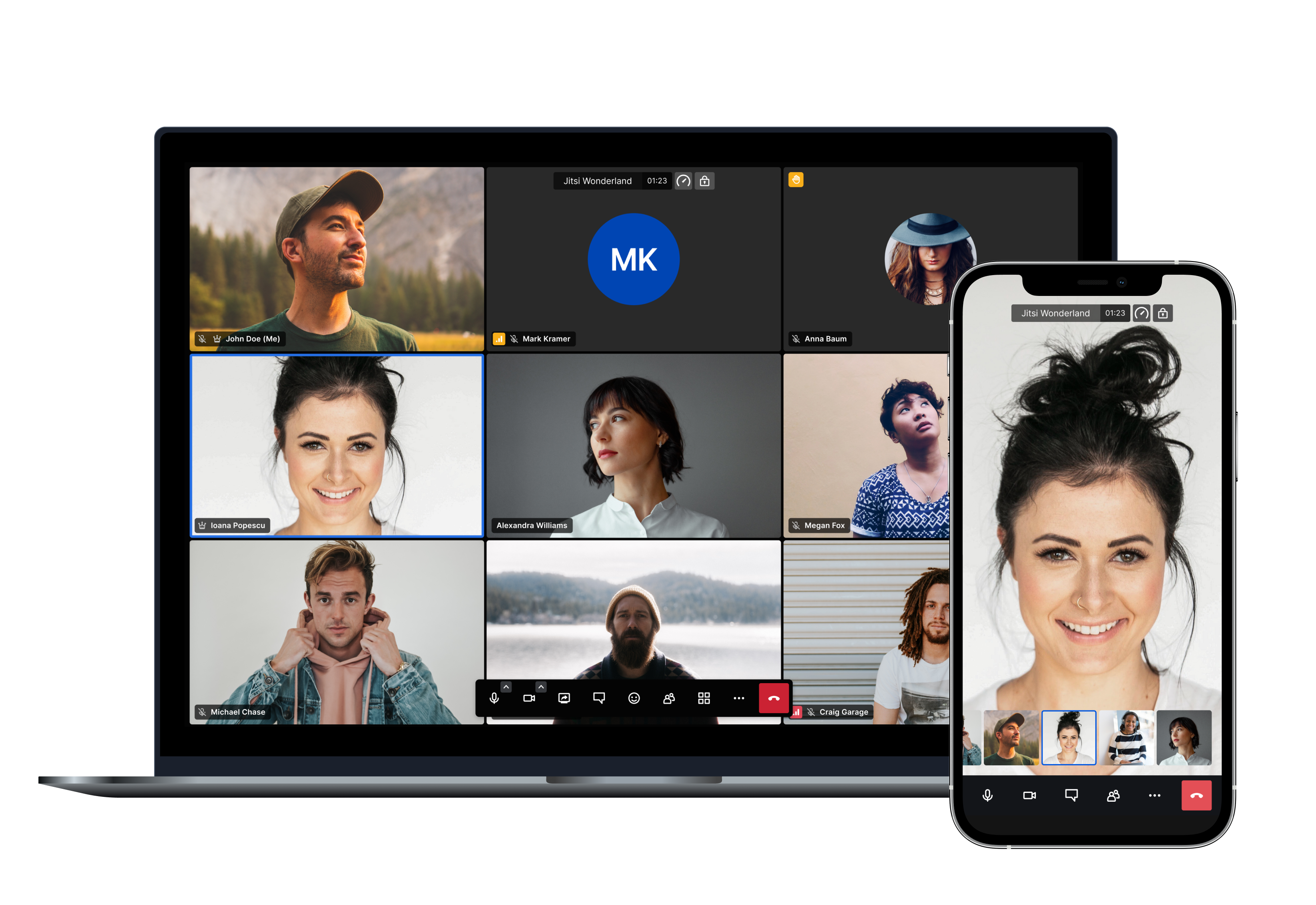Use a fixed set of remote tracks for a call based on the ssrc-limit set in jvb config. When this feature is enabled, JVB will signal the audio and video SSRCs and their owner/endpoint info using a bridge channel message. For audio, the mappings are determined based on the energy rankings on the audio sources present in the call and for video, the mappings are calculated based on the video sources the client requests through the video receiver constraints. Remote tracks are then created/remapped by the client based on these mappings. * Added track_owner_changed action * Skip track-based large-video selection in rewriting mode. * Register OWNER_CHANGED handler at track level. * feat(participants) Add source info to participants in redux. With ssrc-rewriting, the receiver constraints need to be generated using the source info received in presence. Currently they are generated from the track info in redux but with ssrc-rewriting, remote sources are not signaled and therefore created until they are being requested through receiver constraints. Co-authored-by: James A <jqdrqgnq@users.noreply.github.com> |
||
|---|---|---|
| .devcontainer | ||
| .github | ||
| android | ||
| connection_optimization | ||
| css | ||
| debian | ||
| doc | ||
| fonts | ||
| images | ||
| ios | ||
| lang | ||
| modules | ||
| patches | ||
| react | ||
| resources | ||
| service/UI | ||
| sounds | ||
| static | ||
| twa | ||
| .buckconfig | ||
| .editorconfig | ||
| .eslintignore | ||
| .eslintrc.js | ||
| .gitattributes | ||
| .gitignore | ||
| .npmrc | ||
| .nvmrc | ||
| .travis.yml | ||
| .watchmanconfig | ||
| CONTRIBUTING.md | ||
| LICENSE | ||
| Makefile | ||
| README.md | ||
| SECURITY.md | ||
| analytics-ga.js | ||
| app.js | ||
| babel.config.js | ||
| base.html | ||
| body.html | ||
| conference.js | ||
| config.js | ||
| connection.js | ||
| custom.d.ts | ||
| eslint | ||
| favicon.ico | ||
| fonts.html | ||
| globals.d.ts | ||
| globals.native.d.ts | ||
| head.html | ||
| index.android.js | ||
| index.html | ||
| index.ios.js | ||
| interface_config.js | ||
| manifest.json | ||
| metro.config.js | ||
| package-lock.json | ||
| package.json | ||
| plugin.head.html | ||
| pwa-worker.js | ||
| react-native.config.js | ||
| readme-img1.png | ||
| title.html | ||
| tsconfig.native.json | ||
| tsconfig.web.json | ||
| webpack.config.js | ||
README.md
Jitsi Meet
Jitsi Meet is a set of Open Source projects which empower users to use and deploy video conferencing platforms with state-of-the-art video quality and features.

Amongst others here are the main features Jitsi Meet offers:
- Support for all current browsers
- Mobile applications
- Web and native SDKs for integration
- HD audio and video
- Content sharing
- Raise hand and reactions
- Chat with private conversations
- Polls
- Virtual backgrounds
And many more!
Using Jitsi Meet
Using Jitsi Meet is straightforward, as it's browser based. Head over to meet.jit.si and give it a try. It's anonymous, scalable and free to use. All browsers are supported!
Using mobile? No problem, you can either use your mobile web browser or our fully-featured mobile apps:
| Android | Android (F-Droid) | iOS |
|---|---|---|
 |
 |
 |
If you are feeling adventurous and want to get an early scoop of the features as they are being developed you can also sign up for our open beta testing here:
Running your own instance
If you'd like to run your own Jitsi Meet installation head over to the handbook to get started.
We provide Debian packages and a comprehensive Docker setup to make deployments as simple as possible. Advanced users also have the possibility of building all the components from source.
You can check the latest releases here.
Jitsi as a Service
If you like the branding capabilities of running your own instance but you'd like to avoid dealing with the complexity of monitoring, scaling and updates, JaaS might be for you.
8x8 Jitsi as a Service (JaaS) is an enterprise-ready video meeting platform that allows developers, organizations and businesses to easily build and deploy video solutions. With Jitsi as a Service we now give you all the power of Jitsi running on our global platform so you can focus on building secure and branded video experiences.
Documentation
All the Jitsi Meet documentation is available in the handbook.
Security
For a comprehensive description of all Jitsi Meet's security aspects, please check this link.
For a detailed description of Jitsi Meet's End-to-End Encryption (E2EE) implementation, please check this link.
For information on reporting security vulnerabilities in Jitsi Meet, see SECURITY.md.
Contributing
If you are looking to contribute to Jitsi Meet, first of all, thank you! Please see our guidelines for contributing.
Built with ❤️ by the Jitsi team at 8x8 and our community.